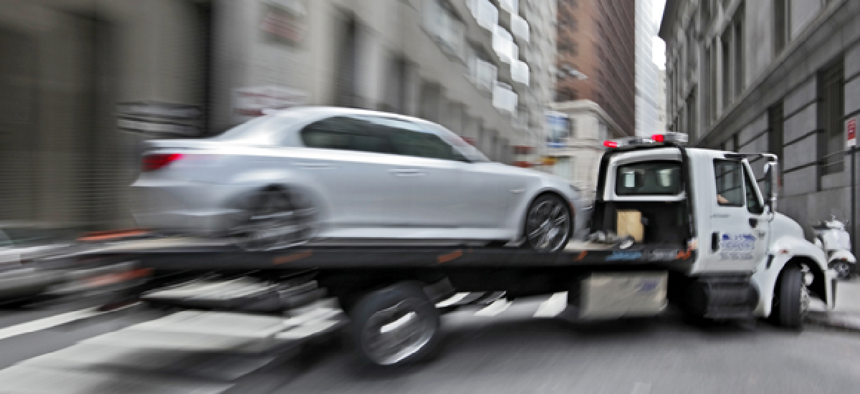Tech takes the friction out of municipal towing

Kansas City, Mo., streamlined its towing process with help from AutoReturn's cloud-based municipal logistics solution.
Traffic backups start the moment an accident occurs. Until tow trucks can clear vehicles from the roadway, traffic can’t get back to normal.
“We hear from logistics engineers that if it takes 30 minutes to clear an accident it could be up to two hours before traffic is running normally, AutoReturn's Alan Brasher told GCN. “So if we can get a truck there in 15 minutes and clear the intersection faster, we can have traffic moving faster again soon.”
AutoReturn, a municipal towing management and logistics solutions company, uses its technology to eliminate the steps and hand-offs traditionally required in municipal towing.
Usually, dispatching a tow truck to an accident is a multistep process.
“Police officers, parking enforcement officers, whoever, makes the request for a tow truck typically has to radio the request into their police communications department,” Brasher told GCN. “Then the communications officer writes down the information and contacts a tow company dispatcher.”
AutoReturn gives municipalities the technology to cut steps from the entire towing life cycle, from the dispatch request to storage and the final disposition of the vehicle. This cloud-based system helps streamline municipal towing services, resulting in lower costs.
AutoReturn provides two services to help solve towing-related issues.
ARIES dispatch is cloud-based platform partnered with a GPS-enabled smartphone application. When a law enforcement official makes a tow request, the police communications operator will enter the information into the ARIES platform at the station, which then sends an alert to the next tow company in the rotation or to the closest truck. The tow driver uses the app to accept the assignment and receive directions to the location. Drivers then use the app to indicate when they’re on the scene and when they have completed the pickup and are on route to the nearest storage facility.
If a vehicle is abandoned or towed, the ARIES impound system takes over.
“Once the vehicle is stored, it hits our website, which can be connected through the 311 system of the city so that citizens immediately know where their vehicle is and how they can get it back,” Brasher said. “The impound system also handles invoices, lien processing and all of the metrics on released vehicles -- and even the auction process on unclaimed vehicles. The idea is just a professional transparent process through the lifecycle of a tow.”
Nate Pare, the manager for tow services in Kansas City, Mo., said the city has been working with AutoReturn for more than three years and that the applications has helped save 30 percent on what was previously spent on towing.
“The city used to do towing themselves using one or two vendors to take care of things, but the city was getting tired of complaints, lack of accountability and response time of 30 to 45 minutes,” Pare told GCN. Working with AutoReturn helped us “reduce overhead, and response times fell from an average of 36 minutes to less than 10 minutes today.” In the event a vehicle is unclaimed after it has been impounded, the auction process now takes days instead of weeks.
Additionally, Pare said that damage complaints are nearly non-existent because drivers are required to document a vehicle by photographing it and recording the make, model, plate and VIN number before it’s towed.
The data collected through the dispatch and impound apps is easily accessible by the police department and city officials, allowing them to see which intersections are the most vulnerable to an accident and where abandoned cars are most frequently left, for example.
“It simplified our operation so it can be more effective, more accurate and save time and money,” Pare said. “It’s completely changed the way we do business.”





